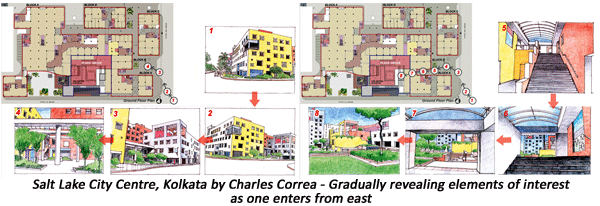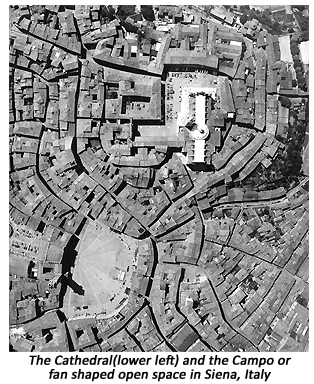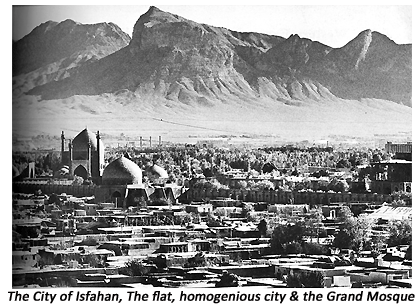- Prelude
- Editorial
- 'Public Sculptures are the Public's own Consciousness'
- Stimulating Thoughts
- Sculptural Traditions and Contemporary Art Practices
- Sculpting out a Third Dimension from Madhya Pradesh
- About Nostalgic Dragonflies and Homes in the Bags: Sculptural Snapshots from the North-East
- A Concise Chronicle of Bengal's Modern Sculpture
- Neo-sculptural Identity: Six Young Sculptors
- From Object to Experience: Notes on American Sculpture
- In the Domain of Drama Sculptures of S.Nandagopal
- Satish Gujral : Sculpting the Inner Form
- Transformation of Articulations: Mrinalini Mukherjee
- The Experiential Quotient in the Sculptures of Ravinder Reddy
- Shresta Rit Premnath A Passion for Structure
- The Anatomy of Melancholy: Sculptures of Rajesh P Subramanium
- A Crusader of/for Site Specific Public Art: Subodh Kerkar
- Installation Practices in and around Santiniketan
- A Wall is a Screen: A Promenade Film Street Performance
- Jaeger-LeCoultre An Overview
- Regency Style: Regency Furniture
- Designing the Streetscapes: Visual Elements of Pedestrian Corridors
- Sculpture Rules It All
- The Triumph of the Eternal
- Artist Index and Statistics- Anish Kapoor
- Auction Reports
- Musings from Chennai
- Art Bengaluru
- Art Events Kolkata: October-November 2010
- Mumbai Art Sighting
- An Evening of Interaction
- 6th Asian Museum Curators' Conference
- Swedish Art in India
- Couple of Difference : Recent sculptures of Karl Antao
- Previews
- In the News
- Sotheby's : Important Watches Geneva
ART news & views
Designing the Streetscapes: Visual Elements of Pedestrian Corridors
Volume: 3 Issue No: 11 Month: 12 Year: 2010
by Partha Ranjan Das

Modern architecture is converting our cities into mundane collages of concrete and glass. By training, architects are egoistical and individualistic. From their early college days, they are taught about the great masters and their magnificent buildings. They are trained to create masterpieces in all their design endeavours. They are never taught to study and respect the fabric of a city.  They have not learnt to appreciate the importance of being ordinary, of being a small part of a larger whole. And the result is visible everywhere.
They have not learnt to appreciate the importance of being ordinary, of being a small part of a larger whole. And the result is visible everywhere.
Ironically, the same architect will go abroad, visit the medieval European cities, and marvel at their old city cores and their homogenous architecture. They will notice that a few landmark buildings are visible only at the town square celebrating their religions and public activities. The rest of the city blends together as a composite whole, enhancing the uniqueness of a few landmarks such as Churches and City Halls.
Even some of the traditional cities in the Middle East and Far East have retained their character by restricting modern architectural interventions in core areas. Some Indian cities have been successful in maintaining their original character, but most have allowed themselves to get destroyed by insensitive “modernisation”. Cities are formed by the juxtaposition of built spaces and open spaces. Ideally one should compliment the other. Medieval cities are good examples of urban design as their public spaces and public thoroughfares were designed with care. Building envelopes served as complimentary backdrops. Not that the cities were devoid of landmark buildings. But the journey through the streets and squares to reach the landmarks were controlled to generate curiosity and surprise. The twisting and turning of streets, narrow streets opening into a square, an arch guiding the vision into another street, everything added to the rich experience of pedestrians and guided them to their final destinations the grand public buildings and their plazas.
All these could happen because cities were designed for people. People were encouraged to walk as the experience of walking was designed to be interesting. The slow pace of walking allowed people to relate to their environment, gradually evolving a sense of belonging to the city fabric. Memories were made.
relate to their environment, gradually evolving a sense of belonging to the city fabric. Memories were made.
The automobiles almost destroyed the intimate relationship between people and their cities. The western world was quick enough to control the damage caused by vehicular roads and flyovers. They allowed their cities to be divided into several smaller segments of walkable zones. Different zones were segregated by wide roads and flyovers where people commuted in fast moving cars, buses and metro rails to their respective destinations without having to slow down to admire a bunch of flowers hanging from a brightly coloured pot kept in a corner of an old balcony with wrought-iron railings.
But the zones segregated by wide roads and fast moving traffic were allowed to retain their pedestrian friendly characters. Streetscapes were considered more important than individual buildings. Conservation of local character and regional flavour was more important than one single box of steel and glass.
It could happen because the citizens wanted it that way. Their involvement in the built environment forced the city authorities to restrain themselves from an insensitive liberalism which would have allowed the modern boxes to replace the memories of the past, like it has happened in our city of Kolkata.
The city built by the British was carefully laid out following the good practices of urban design. The citizens got so used to the humane scale of the built form and the combination of formal setting of Dalhousie Square with the meandering streets of north Kolkata that everybody took it for granted.
In a city famous for its artists, thinkers, filmmakers, musicians and writers, no one talked about the city and its architecture.  The built environment became an issue of the lowest priority. The administrators failed to look at the cityscape as a whole.
The built environment became an issue of the lowest priority. The administrators failed to look at the cityscape as a whole.
It is time for the citizens to start demanding more than what is given to them because urban development does not merely mean building roads and bridges, or maintaining water supply and sewerage. Urban Development has to take into consideration the conservation of old envelopes with modernisation from inside so that the old buildings are seldom pulled down with the excuse of being non-viable. At the same time, new areas should be designed to be a part of Kolkata, not like any other city anywhere in the world.
The challenge for the citizens of the 21st century is to understand that built environment is very much a part of the environment today. To conserve and modernise judiciously is the only way for sustained growth. To build as an extension of the existing is like creating a next generation. The only time our cities will become citizen-friendly is when the citizens want it. Rajarhat or Salt Lake will not be loved or respected like Kolkata 300 years from now. Let us raise our voice to retain the Calcutta of Kolkata.